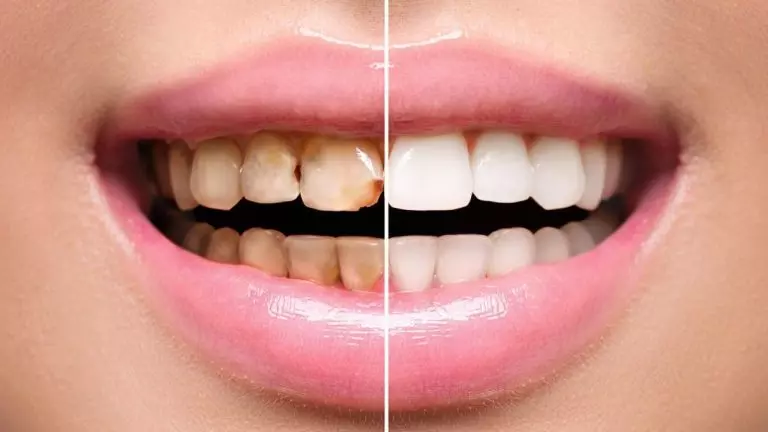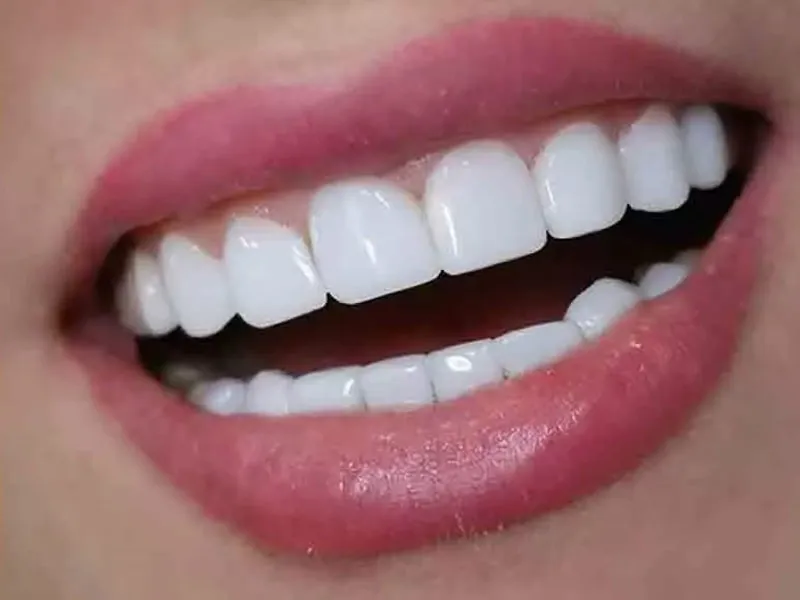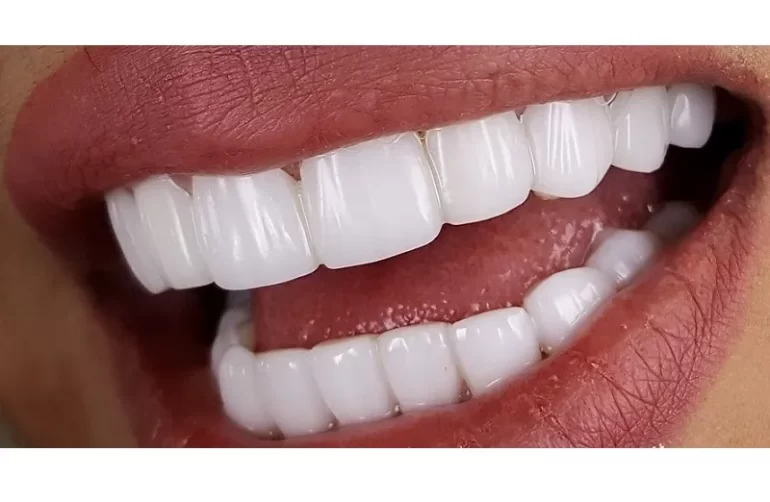In this article, we intend to introduce you to dental composite, its combinations and types of dental composite, so stay with us until the end of the article at Mehr Shariati Dental Clinic .
Natural color tooth composite
Composite with natural color consists of a combination of polymer materials and ceramic or glass particles. These compounds make the composite have a natural color and easily match the surrounding teeth.
Its ingredients include:
- Polymeric materials: Polymeric materials used in composites act as adhesives and bond the composite to the tooth.
- Ceramic or glass particles: Ceramic or glass particles give the composite. These particles act as colorants and make the dental composite match the color of the surrounding teeth.
Durability of dental composite
- Material quality: The use of quality materials in accordance with medical standards has a direct impact on the durability of the restoration.
- Restoration technique: the professionalism of the dentist and the correct and precise restoration can have a great impact on the durability of the composite.
- Oral environment: The oral environment, including stomach acids, bacterial agents and loading forces on the teeth can affect the durability of the composite.
- Dental care: maintaining oral and dental hygiene, observing hygiene tips and following up on dental care can provide a longer life for composite restorations.
Types of dental composite veneers
Composite and veneers are two different types of tooth restoration that are made of different materials. These two types are as follows:
-
Dental composite:
Composite is a type of resin material that is used to repair damaged or cracked areas in the teeth. This material consists of a combination of polymer materials and ceramic or glass particles that have the same color as teeth. Composites adhere to the tooth in terms of natural color and are permanently integrated with the tooth.
-
Veneers:
Veneers are a kind of thin and hard covering that are placed on the front surface of the teeth. These covers are made of materials such as porcelain or composite. Veneers can make the teeth look more beautiful due to the color chosen for them and also cover problems such as tooth stains or gaps between the teeth.
Choosing between composites and veneers depends on the pros and cons of each, and your needs and circumstances. To make the right choice, it is better to consult your dentist to determine the best option for you.

Glacier white composite
The term “refrigerated white dental composite” refers to tooth restorations using composites that are white at first and the color is restored as soon as heat is applied or the temperature changes, for example by using a refrigerator. These types of composites are known as “thermochromic dental restorations”.
When the dentist applies white composites to the teeth, usually in areas that are visible to the naked eye, such as the front teeth, they are white at first, and with time and changes in temperature (for example, by drinking hot liquids or eating hot foods), the color will change. It returns to them naturally and matches the color of the surrounding teeth.
This feature allows the composites to match the natural and long-term color of the teeth in the final result and preserve the beauty of the teeth. These types of composites are mostly used to restore front teeth that are visible at first sight.
Ceramic dental composite
In general, it can be said that ceramic dental composites are usually composed of a combination of polymer materials and ceramic particles.
These types of composites consist of two main elements:
- Polymer matrix: which acts as an adhesive and bonds the composite to the tooth.
- Ceramic particles: These ceramic particles act as colorants and make the ceramic tooth composite match the color of the surrounding teeth.
Ceramic dental composites can be used to restore front teeth that require natural color and high aesthetics. These types of composites are used as a beautiful and durable option for tooth restoration.
Shell tooth composite
In dentistry, the term “shell tooth composite” usually refers to composites that are similar in color to shells. These types of composites are used to restore teeth with a natural and beautiful color and try to match the shape and color of natural teeth.
Shell tooth composites are made as a type of natural color dental composites. These composites include a combination of polymer materials and ceramic or glass particles that match the color of the surrounding teeth.
What composites are usually used for dental care?
They usually use shell tooth color composite to repair the front teeth or other visible areas of the teeth. These types of composites are very useful for creating beautiful and natural results and are mostly used to improve the appearance of teeth.
In any case, if you wish to restore your teeth with dental composite or any other type, it is better to consult with your dentist to determine the best method of tooth restoration that suits your needs.
Swiss dental composite
Swiss dental composites are known as a type of high quality dental composites produced by Swiss companies. Features of this type of composites:
- Beauty: Swiss dental composites use the natural colors of the teeth and adapt well to the teeth.
- Resistance: These types of composites usually have high resistance to pressure and impact and can be used as durable and stable dental restorations.
- Flexibility: Swiss dental composites have high flexibility that allows the teeth to flex with the natural movements of the mouth.
- Compatibility: These composites are compatible with dental tissues and are usually stiff and resistant under load.
Comparison of composite with laminate
Composites and laminates are both types of dental restorations that are used to improve the appearance of teeth. But these two methods have differences:
Dental composite:
- Dental composite restorations are usually performed directly in the mouth, and polymer materials and ceramic or glass particles are attached to the tooth.
- It is used for smaller repairs and changing the color and shape of teeth.
- It needs to remove a little bit from the surface of the target tooth so that the restoration can stick to the tooth.
- It has a high level of resistance and a relatively shorter usage time than laminate.
- It is mostly used as a spring restoration and natural restoration of teeth.
Lamination:
- Laminates are generally prepared outside the mouth and then bonded to the teeth.
- It is used to correct the shape, color, size and position of teeth.
- It requires a small amount of removal from the tooth surface to prepare the laminate placement, but this amount is less than composite.
- Laminates are more compatible than gums and oral tissues and usually require less maintenance.
- Changes in the shape of teeth with laminates are more precise and predictable than composites.

Dental composite care
Regular care of dental composite increases the durability and longevity of your dental restorations. Here are some of the cares you can take for your dental composite:
- Regular oral hygiene: brush the teeth twice a day for two minutes and use dental floss or dental floss (scale) to clean the space between the teeth.
- Using a soft toothbrush: Use a soft toothbrush to clean the composite teeth and prevent them from scratching.
- Limiting consumption of foods and drinks that cause staining: Avoiding food and drinks such as coffee, tea, sushi, sausages and sausages and other materials used in teeth coloring helps to keep the composite color of the teeth stable.
- Avoid chewing on hard objects: Avoid chewing on water and silicone rings or any other hard object that can put pressure on the composite and damage it.
- Periodic visits to the dentist: By visiting the dentist regularly and performing periodic cleanings, maintain the health of your dental composites and detect problems in time.
Does the composite hurt?
Composite usually does not feel painful when applying and restoring the tooth. But it is possible that after tooth restoration with composite, the tooth may show sensitivity to heat or cold in the first times after restoration. This sensitivity is usually temporary and subsides after a few days to weeks.
In some cases, if your teeth have deeper restorations and are close to the tooth nerve, you may experience temporary pain after the restoration. This pain may be due to irritation and sensitivity of the tooth nerve and will improve over time.
If the pain continues for a long time or is severe after tooth restoration with composite, it is better to inform your dentist so that it can be examined and, if necessary, necessary measures can be taken to solve the problem.
Complications of dental composite
Dental composites are generally known as safe and non-toxic materials and most people use them without problems. Some of these complications include:
- Allergy: Some people may be allergic to dental composite materials. This sensitivity is usually related to heat and cold and can last for a short time after the tooth is restored with composite.
- Color change: If the dental composite is used with the wrong color or not suitable for your teeth, their color may change over time and may not match the teeth.
- Breakage and damage: In cases where the dental composite is exposed to pressure or impact, it may break or damage.
- Need for re-restoration: Dental composite restorations may require re-restoration over time and repeated use.
Gingivitis in composite
Dental composite does not directly cause gingivitis. But in some cases, if the tooth restoration is done with an inappropriate composite or does not have the necessary skills, it may cause problems in the gums and tissues far from the teeth, leading to gingivitis.
Some of the problems that can occur with composite restorations and lead to gingivitis are:
Some causes of gingivitis in composite
- Aberrant restoration edges: If the edges of composite restorations do not match the gingiva, it can damage the gingival tissues and cause inflammation.
- Improper restoration size: Dental composite restorations must be the right size and fit well with the surrounding teeth. Improperly sized restorations can cause gum problems.
- Failure to clean the teeth: If the teeth are not cleaned well after the composite restoration, bacteria can collect around the restoration and cause gingivitis.
Cigarettes and composites
Smoking can have negative effects on composites. Some of the effects of smoking on composites include:
- Stains and discoloration: The combination of cigarette smoke with cigarette smoke can cause stains and discoloration of dental composites. These effects may reduce the beauty and natural compatibility of composites with the surrounding teeth.
- Loss of quality: substances in cigarette smoke can interact with composites and cause their quality to decrease.
- Faster deterioration: Smoking reduces the resistance of dental composites against pressure and impact and may cause them to deteriorate faster.
- Gingivitis: Smoking can cause inflammation and damage to the gums, which may lead to the failure of composite restorations.

Bad breath and composite
Bad breath or halitosis may be correlated with dental composite, but the composite itself is not directly the cause of bad breath. Bad breath is usually caused by bacteria and food particles in the mouth.
In some cases, if a large dental composite restoration is performed and the space between the tooth and the composite is filled, bacteria may accumulate in this space and cause bad breath. To reduce bad breath and maintain dental composite restorations, regular oral care and Effectiveness is important.
Composite for people under 18 years old
Composite is usually used to restore teeth under the age of 18. These materials are used to repair permanent teeth in young people and children. Dental composite is known as a beautiful and cost-effective alternative to natural-colored dental restorations. Advantages of using dental composite in young people and children:
- Natural color: dental composite adapts well to the teeth and simulates the natural color of the teeth.
- Protecting the health of the teeth: By restoring the teeth with dental composite, the health of the teeth is maintained, and larger dental work is less needed than composite restorations.
- Shorter usage time: Composite restorations generally require less time to perform and younger people can easily tolerate the process.
Veneered tooth composite
Veneered tooth composite is one of the methods of tooth restoration. This process is known as “composite veneers”. Composite veneers are a type of aesthetic coating that is attached to the surface of the teeth to improve the shape, color, size and density of the teeth.
Composite veneers are usually used to restore permanent teeth or isolated teeth. These restorations are made of dental composite materials that are bonded to the tooth surface after matching your teeth. Composite veneers are used to improve the appearance of teeth due to their natural and beautiful appearance. Among the advantages of composite veneers, we can mention the following:
- Improving the appearance of teeth: Composite veneers allow you to change the shape and color of your teeth.
- Preserving the surface of the teeth: In some cases, the use of composite veneers requires the removal of a small amount of the surface of the teeth, which is less than dental tiles or porcelains.
- Non-hematone restoration: Composite veneers are suitable for repairing non-hematone teeth and can change the shape and color of the teeth.

Composite of disorganized teeth
The composite of dislocated teeth means the restoration of teeth that are connected to each other and composite restorations are needed for them. This is especially used to repair cracked, chipped or otherwise damaged teeth. The necessary steps to repair messed up teeth with composite are:
- Teeth cleaning: First, the messy teeth and their surroundings are cleaned to remove bacteria and food particles.
- Cutting and cleaning holes: If the teeth have holes, the holes are cut and cleaned so that the teeth are properly prepared for restoration.
- Tooth restoration: the composite is selected in the same color as the teeth and is placed on the surface of the teeth. The dentist carefully matches the shape and color of the composite to the misaligned teeth to achieve a natural result.
- Drying and hardening: after placing the composite, the teeth are exposed using a special lamp so that the composite hardens and the final restoration is attached to the teeth.
This process is generally done in one session by the dentist. After your teeth have been restored, you may be given advice on regular dental care to maintain the long-term effectiveness and durability of your restorations.
Upper jaw composite
Upper jaw composite, in other words, composite is used to repair the teeth in the upper jaw. Dental composite is a material such as resins and glass materials that is attached to the teeth and restores the natural color and appearance of the teeth.
Application of upper jaw composite
It is generally used to restore permanent teeth. These restorations are used in permanent teeth, repair of holes and small and medium damages of teeth. By using upper jaw composite, teeth are restored in a beautiful and affordable way.
Conclusion
In general, if the composite restoration is done correctly and proper dental care is taken care of, we can expect good durability for the composite. But these restorations may be repaired or replaced with time and oral needs.

